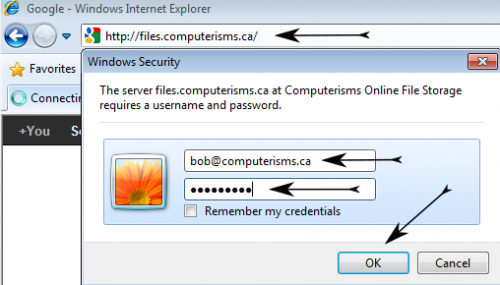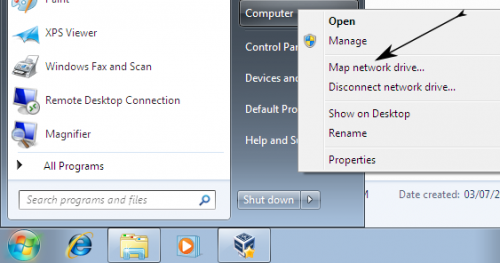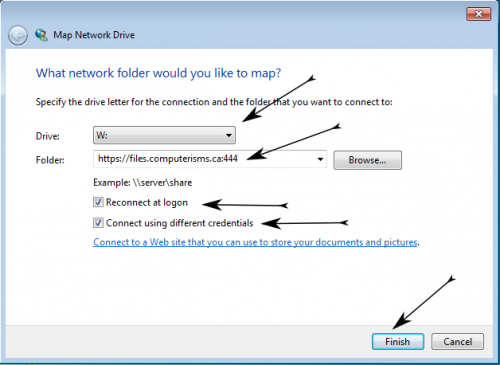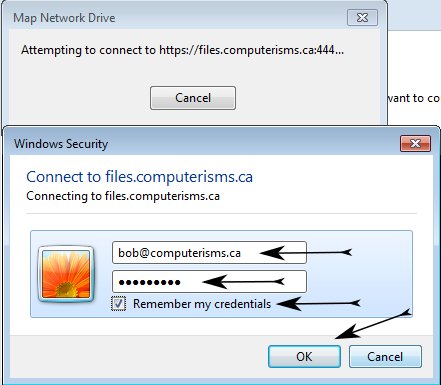Files: Difference between revisions
Jump to navigation
Jump to search
| Line 16: | Line 16: | ||
*<b>Before you begin:</b> | *<b>Before you begin:</b> | ||
**You need to download and install [http://www.microsoft.com/en-us/download/details.aspx?id=15123 The Software Update for Web Folders] | **You need to download and install [http://www.microsoft.com/en-us/download/details.aspx?id=15123 The Software Update for Web Folders] | ||
**You will also need to [[Security Certificates#Internet Explorer - Importing Certificate Authority|install the Computerisms Certificate Authority]] | **You will also need to [[Security Certificates#Internet Explorer - Importing Certificate Authority|install the Computerisms Certificate Authority through Internet Explorer]] | ||
{| style="width:100%" border="1" cellspacing="0" | {| style="width:100%" border="1" cellspacing="0" | ||
|- | |- | ||
Revision as of 19:14, 8 August 2012
How it Works
- Computerisms Online File Storage is a method of storing files on the Web Server so they can be accessed from multiple locations
- When configured correctly, the storage area can be used as a drive letter on your windows computer or it is mounted in your file system if you use linux or a mac.
- The storage area can also be accessed via a browser
- Your email address and password are required to access the files by either method
- This service is using the WebDAV protocol; you should be able to use any client that supports WebDAV
- This service would be useful for an organization that needs the functionality of a fully accessible file server outside the office.
A word about Security
- There is only one storage area
- The storage area can be accessed by anybody with an email address in your organization
- You may make any number of folders in the storage area
- You may not deny access of any folder to any users, there is no permissions scheme.
Setting up File Storage on Windows 7
- Before you begin:
- You need to download and install The Software Update for Web Folders
- You will also need to install the Computerisms Certificate Authority through Internet Explorer
|
 |
 |
|
|
 |
 |
|
|
 |
 |
|